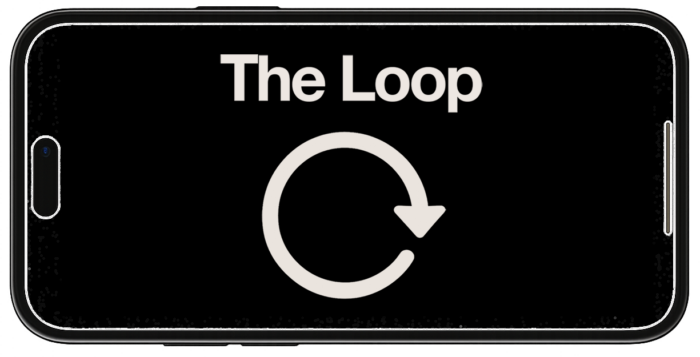In most cases, you’re going to choose a Facebook campaign objective related to a specific type of action (conversions, store traffic, engagement, app installs, etc.). But there is a time and place for using the Reach objective with Reach optimization.
Let’s discuss…
Reach Objective Defined

The tip Facebook provides for the Reach objective is simple:
Show your ads to the maximum number of people.
This is an important distinction. In most cases, you want Facebook to show people to a small percentage of people in your target audience who are most likely to perform your desired action. By choosing the Reach objective, you’ve indicated that the action isn’t so important; you want to get your ad in front of as many people as possible.
This happens ad the ad set level with optimization.
Reach Optimization Defined
The Reach objective is unique because of what you can do at the ad set level related to optimization.
Your only options for optimization under this objective are Reach (the default) and Impressions.
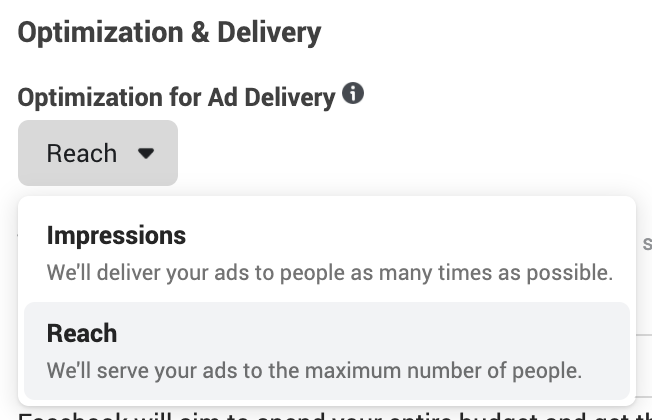
Reach optimization is what ultimately carries out the Reach objective to serve your ads to the maximum number of people.
You can then set a frequency cap, which limits how often you can reach people.
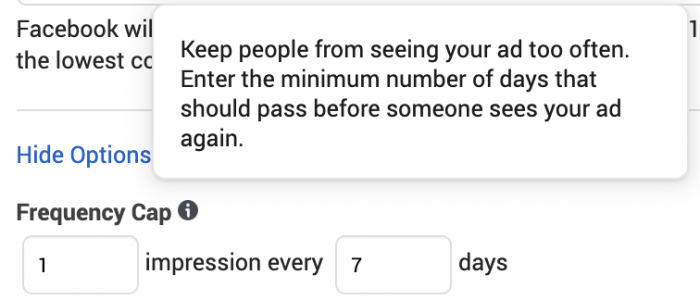
The default is 1 impression every 7 days. If that’s what you use, you’ll need a very large audience or low budget. Ultimately, though, it’s going to depend on why you’re using Reach in the first place.
Reach vs. Reach and Frequency Buying Type
Don’t confuse this option with the Reach and Frequency buying type. When setting up a campaign, most advertisers will use the Auction buying type, which is selected by deault. But, you can change it.

A full explanation of Reach and Frequency buying requires a separate blog post, but a few things…
First, you can use Reach and Frequency buying in connection too multiple objectives (Brand Awareness, Reach, Traffic, Engagement, App Installs, Video Views, and Conversions).
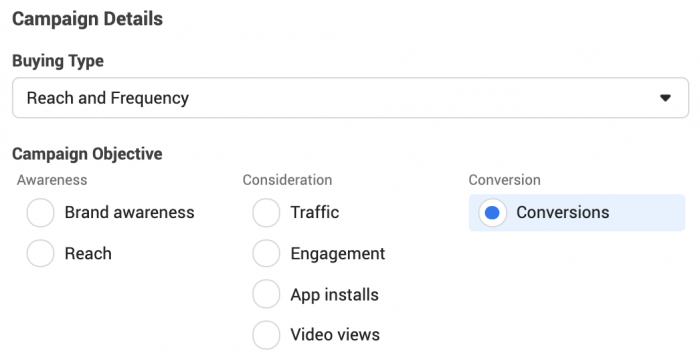
So, that’s a potential advantage over the Reach objective and optimization in that you can choose to optimize for a specific action while still using frequency capping.

You’ll also get predictions related to how your ads will be distributed.
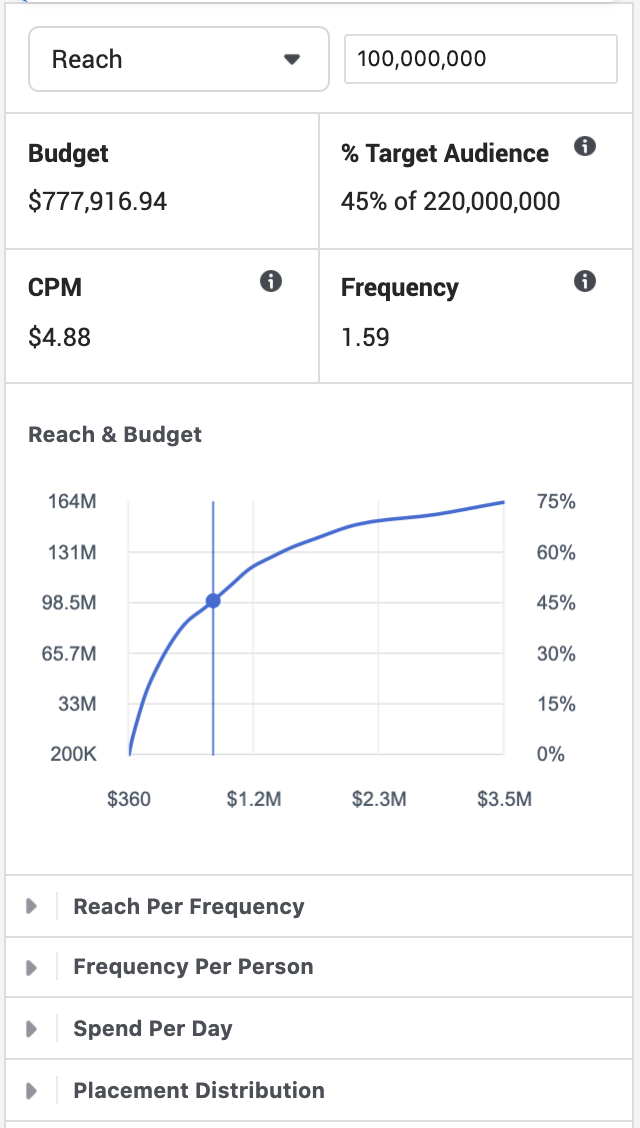
Where this starts becoming less accessible for all advertisers is that, at a minimum, you need your campaign to reach 200,000 people.
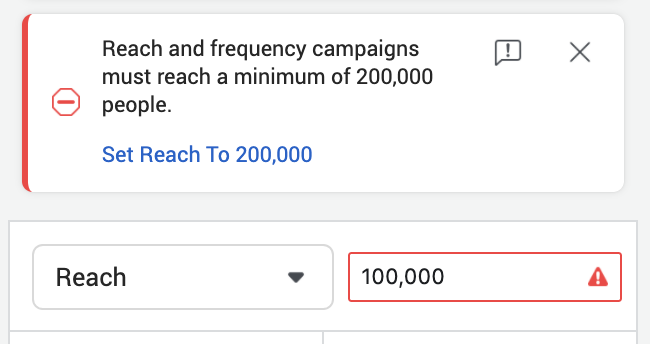
That may mean spending more than smaller advertisers are comfortable with.
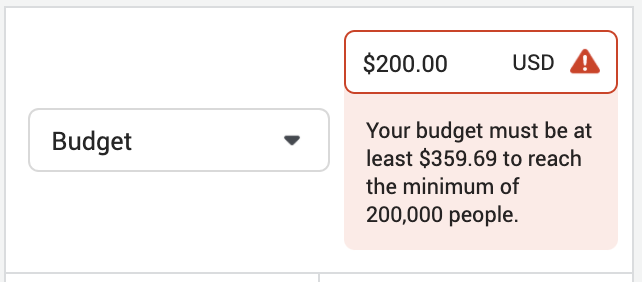
This is intended for broad targeting within a single country. While it technically can be used with custom audiences, that assumes those audiences are big enough to reach your minimums within a country.
In other words, Reach and Frequency buying makes sense for a small segment of advertisers.
Reach vs. Daily Unique Reach
Another option to compare this to is Daily Unique Reach optimization.
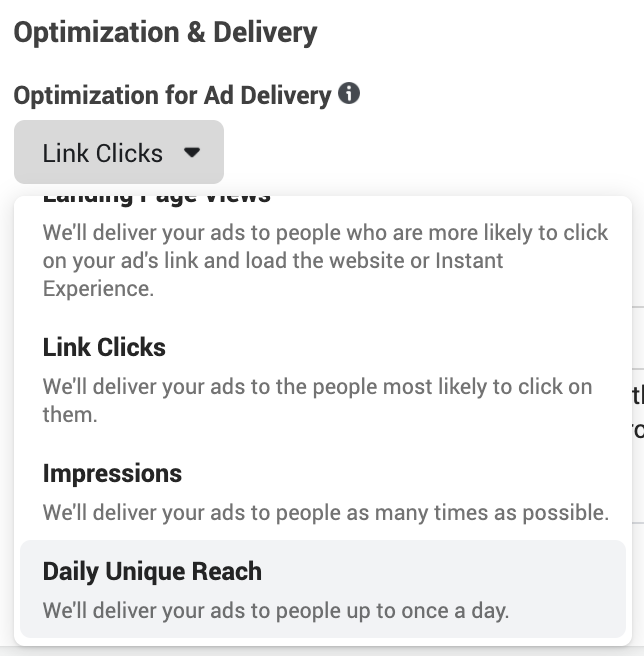
Daily Unique Reach has actually been around longer, but it’s more simplistic. Reach allows you complete control of frequency capping; Daily Unique Reach simply caps reaching people no more than once per day.
That’s the big advantage to using Reach optimization. It’s the happy medium between Daily Unique Reach and Reach and Frequency buying. Granted, I’d prefer to use Reach and Frequency buying for smaller audiences and lower budgets, but Reach optimization is the next best thing.
Use Cases for Reach Objective
Reach optimization solves a specific problem for me. There are times when I want to reach as many people within a small audience as possible. And it’s nice to be able to frequency cap.
This is the way I pull off my evergreen campaigns. I have a small group of people whom I want to reach — and I want to reach all of them if I can. I use short durations and high frequency cap limits to reach them during a short window of time.
When using Reach, though, be careful regarding how you spend those limited impressions. I choose a select couple of placements so that I don’t waste impressions on Audience Network, for example.
Overall, it’s up to you. Get creative. Test it out!
Your Turn
Have you used the Reach objective and optimization? How have you used it, and what kind of results do you see?
Let me know in the comments below!

